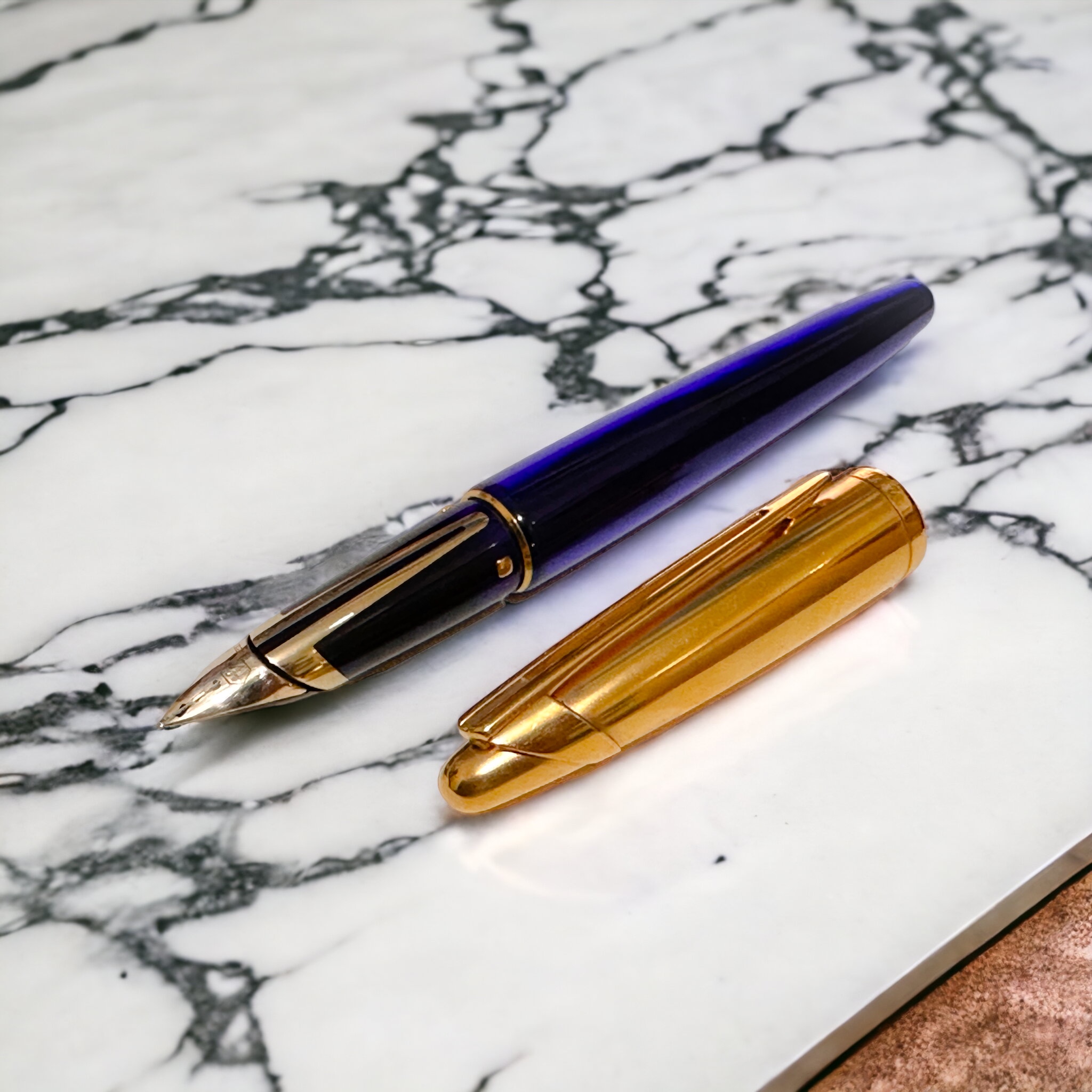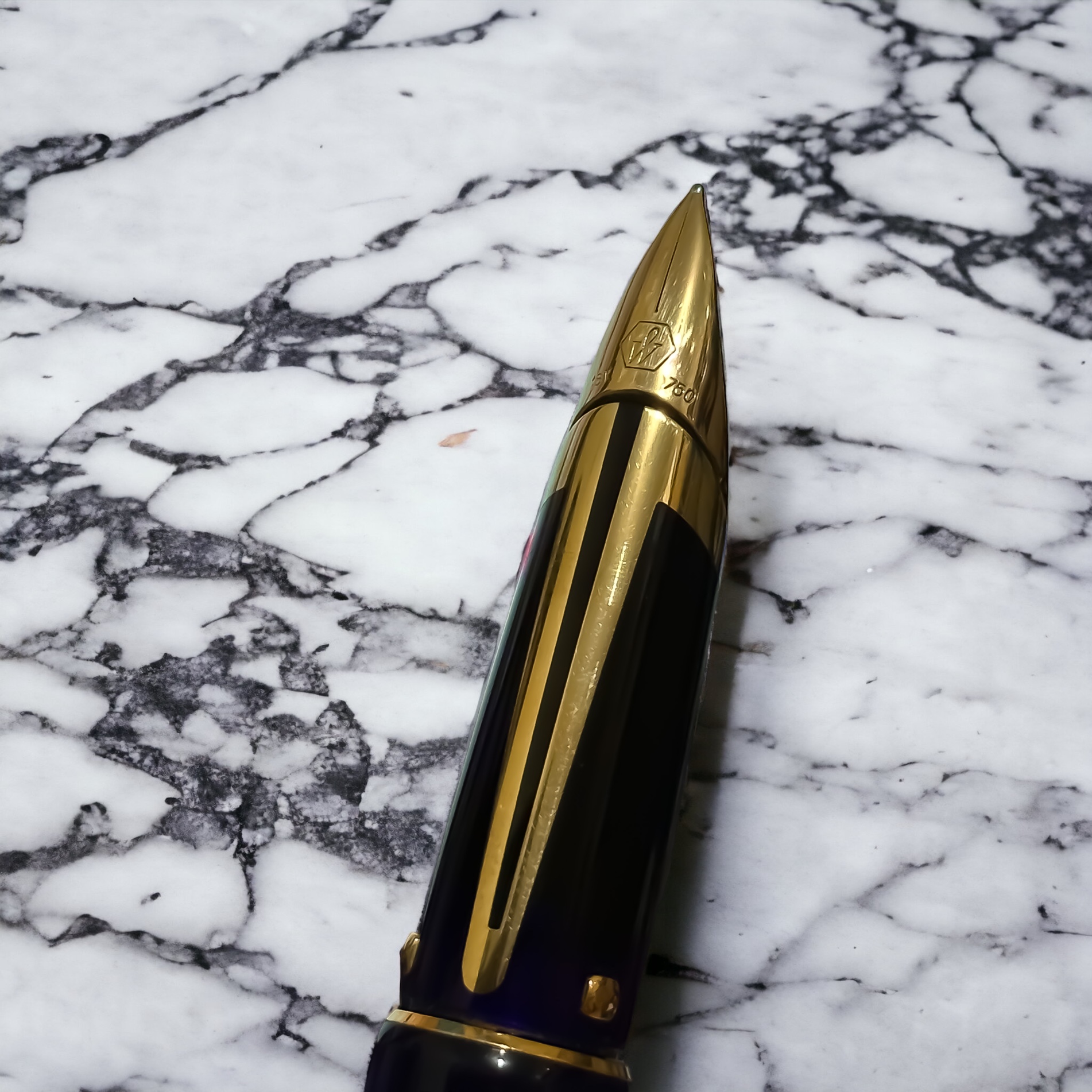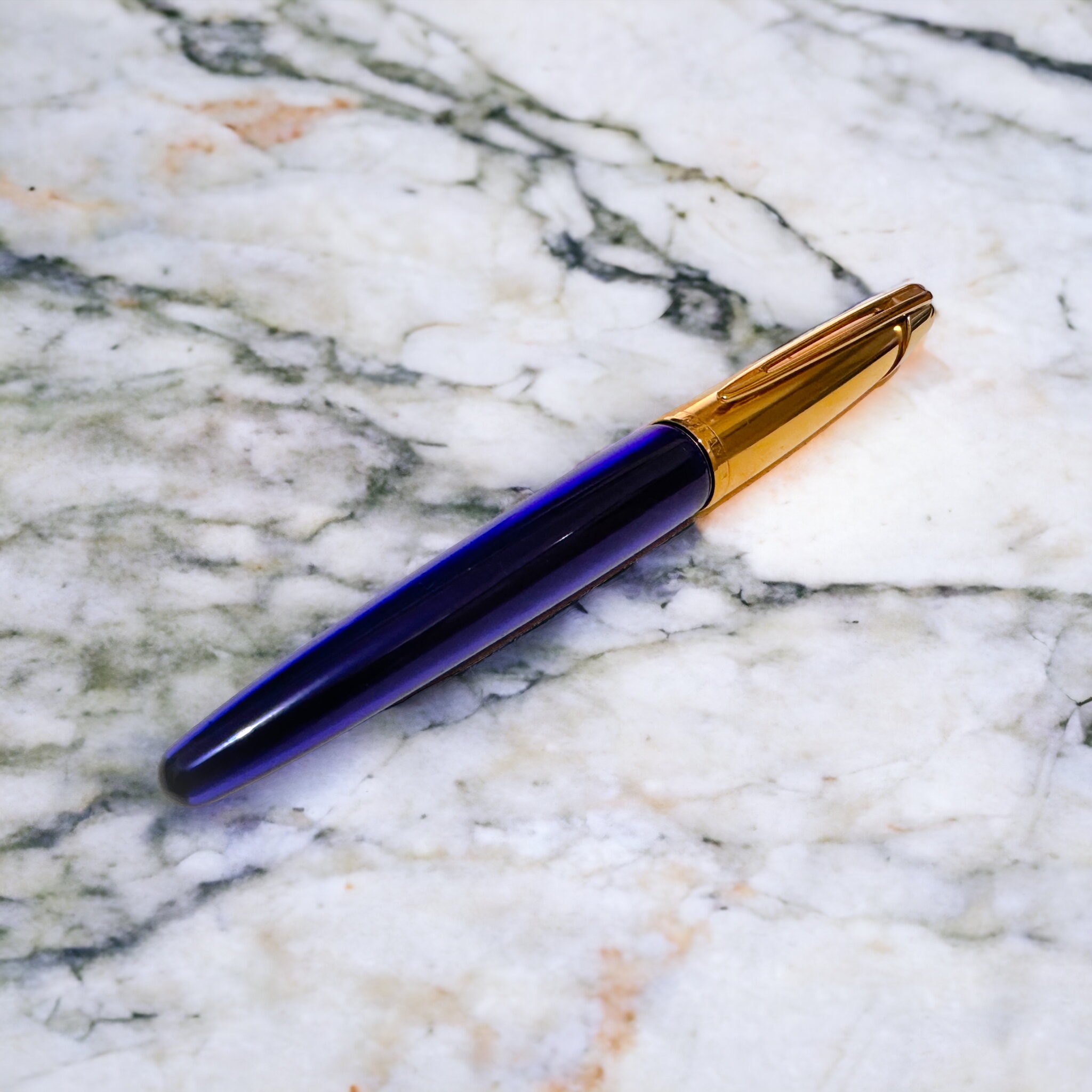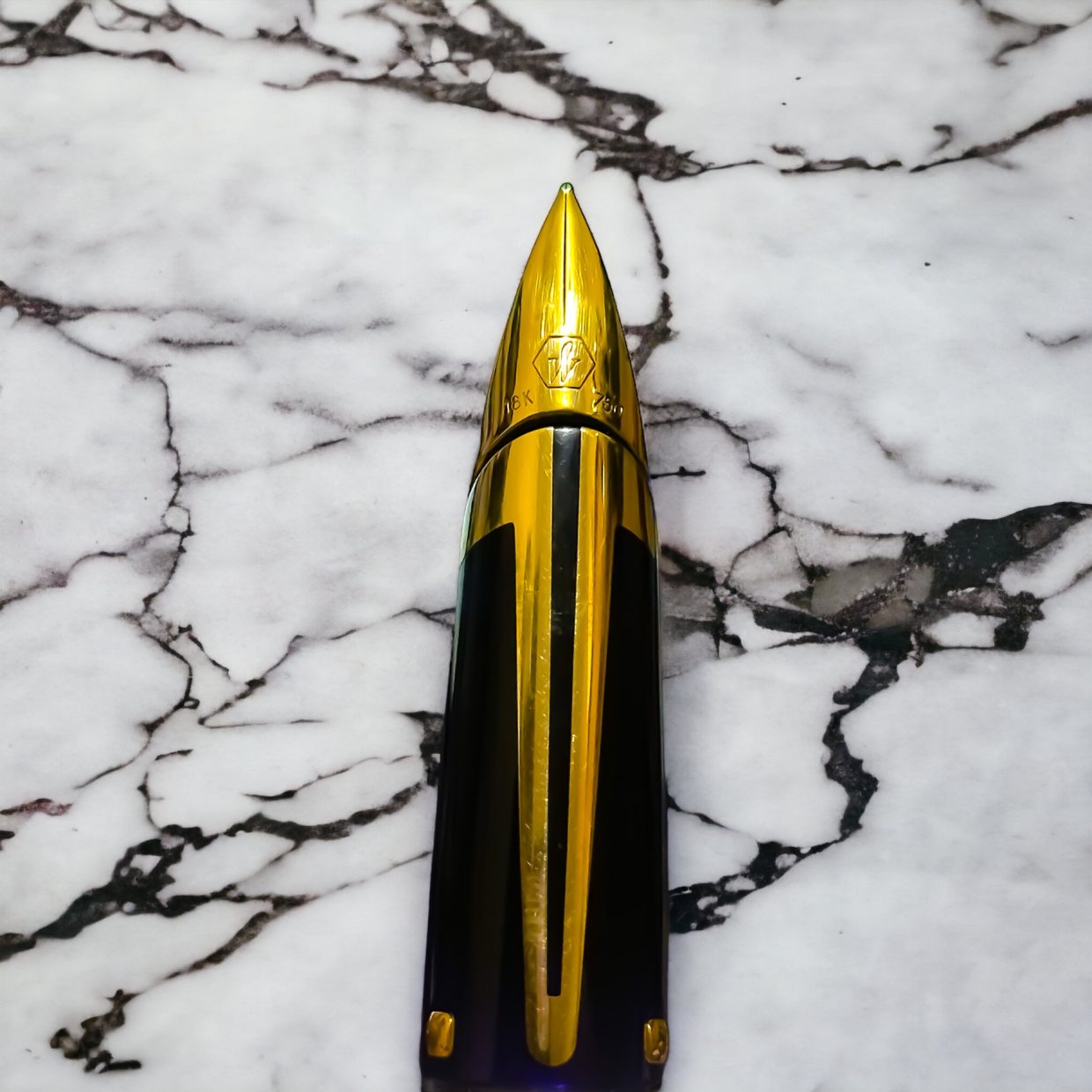The Waterman Edson Sapphire is supposed to be a luxurious and highly esteemed writing instrument with a stunning design that captivates from the first glance. It features a deep blue sapphire-coloured lacquer barrel with lustrous silver accents, giving it a refined and sophisticated appearance. The pen’s streamlined shape, sleek clip, and intricate detailing demonstrate the meticulous attention to design that Waterman is renowned for. The overall aesthetic of the pen conveys a sense of prestige and luxury.

The Au750 (18k gold) nib of the Edson Sapphire fountain pen provides a remarkable writing experience. It glides effortlessly across the paper, delivering smooth and consistent lines — at least when it was new. The nib’s fine craftsmanship ensures optimal ink flow, allowing for a controlled and precise writing experience. While the pen may come at a higher price point, its exceptional quality, attention to detail, and apparently distinctive design make it a coveted choice for pen enthusiasts. Edson uses a cartridge-converter filling system.

The story of Waterman pens started in 1884, when Lewis Edson Waterman — an insurance agent from New York City — experienced a significant issue with a fountain pen during a business deal. Frustrated by the pen’s unreliability and leaking, he sought to improve the design and functionality of fountain pens. Waterman developed his own fountain pen prototype; and he received a patent for his first practical fountain pen, which featured a capillary feed system and an ink chamber with a regulated flow.

This innovation eliminated the issues of leakage and inconsistent ink flow that plagued earlier fountain pen designs. Waterman’s fountain pen design gained popularity and recognition for its reliability and smooth writing experience. In 1888, he established the Waterman Pen Company in New York City. The company quickly gained a reputation for producing high-quality writing instruments.

In the early 20th century, Waterman expanded its operations globally, establishing subsidiaries and manufacturing facilities in Europe and Canada. The company’s pens became popular worldwide. As the 20th century wore on, Waterman’s conservatism allowed its younger and more innovative competitors to gain market share — Parker, Sheaffer, and Wahl-Eversharp in particular. By the later 1920s, Waterman was attempting to catch up; it continued to struggle through and beyond World War II before finally shutting down in 1954. Waterman’s French subsidiary, Waterman-JIF (Jules-Isidore Fagard) later Waterman S.A., continued to prosper and eventually absorbed what remained of the American company and its British arm. Today, Waterman is a French brand owned by the Newell Brands group.


